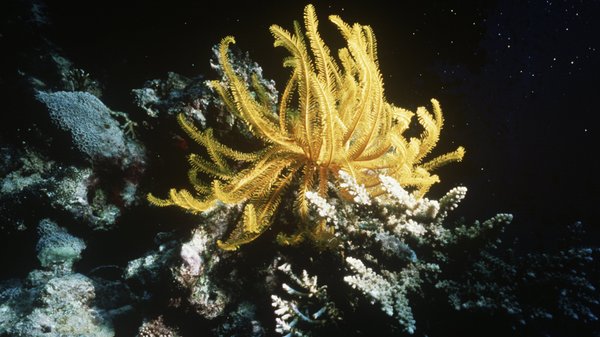We meet the scientists trying to uncover ocean mysteries and look at the promise and perils of seabed mining.
Oceans cover 70 percent of the earth’s surface, but only a fraction of the undersea world has been explored.
On this episode of TechKnow, Phil Torres joins a team of scientists on a special expedition to explore and uncover the mysteries at the bottom of the ocean floor.
What we are doing is similar to astronauts and planetary scientists just trying to study life on another planet.
Beth Orcutt, scientist
“What we are doing is similar to astronauts and planetary scientists just trying to study life on another planet,” says Beth Orcutt, a senior research scientist.
The journey begins in Costa Rica aboard the R/V Atlantis, a research vessel operated by the Woods Hole Oceanographic Institution. From there, Phil gets the chance to take a dive with Alvin, a deep-water submersible capable of taking explorers down to 6,000 metres (20,000 feet) under the sea.
Commissioned in 1964, Alvin has a celebrated history, locating an unexploded hydrogen bomb off the coast of Spain and exploring the famous RMS Titanic in the 1980s.
Alvin and its first female pilot, Cindy Van Dover, were the first to discover hydrothermal vents, which are underwater springs where plumes of black smoke and water pour out from underneath the earth’s crust. The vents were inhabited by previously unknown organisms that thrived in the absence of sunlight.
After 40 years of exploration, Alvin got a high-tech upgrade. The storied submersible is now outfitted with high-resolution cameras to provide a 245-degree viewing field and a robotic arm that scientists can use to pull samples of rock and ocean life to then study back on land.
But scientists are not the only ones interested in the ocean. These days the new gold rush is not in the hills, it is in the deep sea. For thousands of years miners have been exploiting the earth in search of precious metals. As resources on dry land are depleted, now the search for new sources of metals and minerals is heading underwater.
The National Oceanic and Atmospheric Administration’s national ocean service estimates that there is more than $150tn in gold waiting to be mined from the floor of the world’s oceans.
“The industry is moving very, very fast. They have far more financial resources than the scientific community,” says Cindy Van Dover, Alvin’s first female pilot and Duke University Oceanography Professor.
Seabed mining is still in the planning stages, but Nautilus Minerals, a Canadian mining company, says it has the technology and the contracts in place with the island nation of Papua New Guinea to start mining in its waters in about two years.
What is the future of seabed mining? And what are the consequences of seabed mining for the marine ecosystems? Can science and industry co-exist and work together on viable and sustainable solutions?
Source: Al Jazeera














